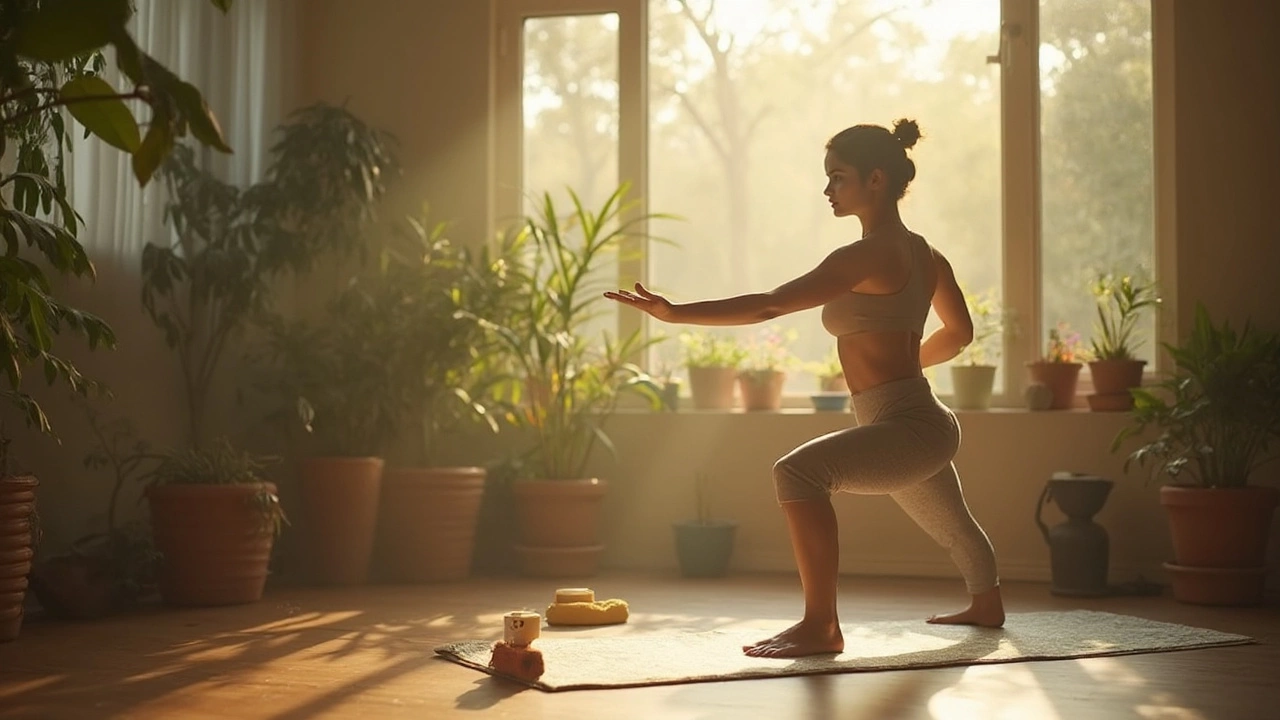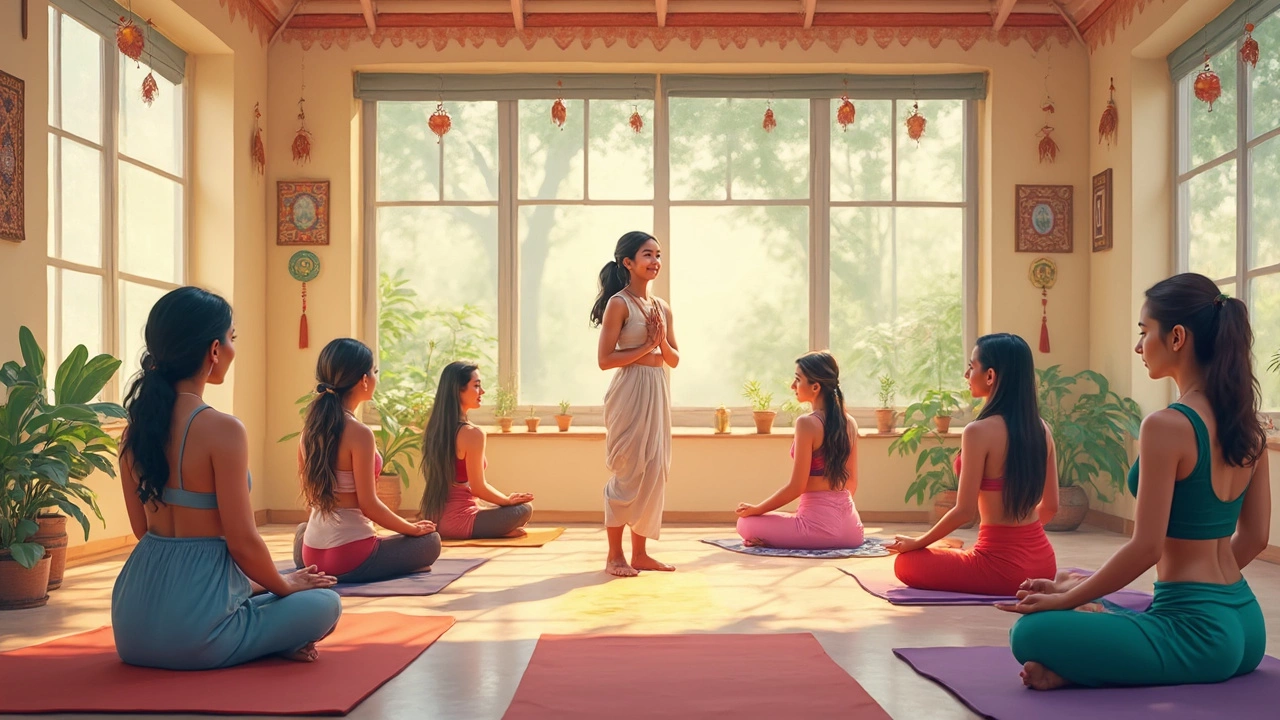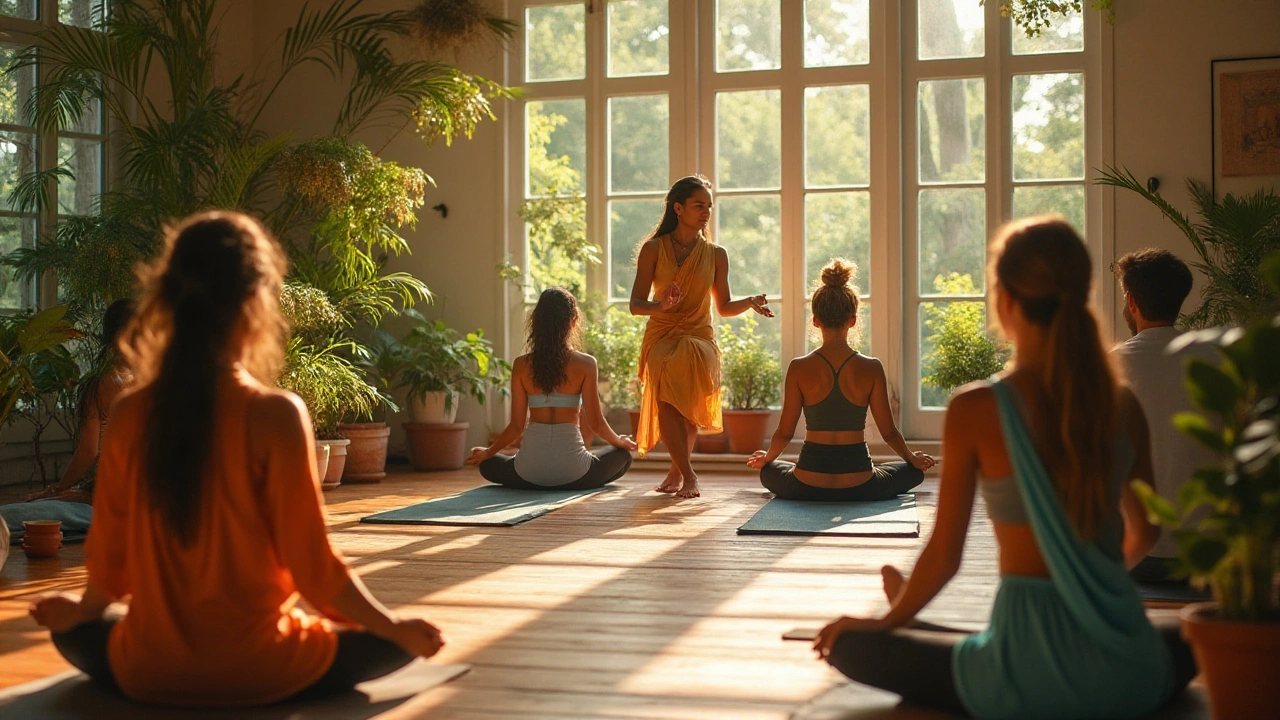Yoga Made Simple: Tips, Workouts, and Real Benefits
If you’ve ever wondered how yoga can fit into a busy life, you’re in the right place. Yoga isn’t just about twisting into fancy poses; it’s a tool to make you feel stronger, more flexible, and less stressed. Below you’ll find easy steps to start, common mistakes to avoid, and why a regular practice can change everyday performance.
Start with the Basics – A Beginner Routine
Pick a quiet corner, lay down a mat, and spend five minutes breathing. Inhale deep through the nose, exhale through the mouth. This simple breath work signals your body to relax and prepares the muscles for movement.
After the breathing, move into three core poses:
- Mountain Pose (Tadasana) – Stand tall, feet hip‑width apart, shoulders relaxed. Feel your weight evenly spread and engage your core. Hold for 30 seconds.
- Cat‑Cow Stretch (Marjaryasana‑Bitilasana) – On hands and knees, arch your back up (cat) and then sink it down (cow). Flow with your breath for a minute to loosen the spine.
- Downward‑Facing Dog (Adho Mukha Svanasana) – Lift hips up and back, forming an inverted V. Stretch your hamstrings and shoulders, hold for 45 seconds.
These moves target the whole body, improve circulation, and are easy to remember. As you get comfortable, add a few minutes of sun salutations to build heat and stamina.
Why Yoga Works – Benefits You’ll Notice Fast
Flexibility is the obvious win, but yoga also strengthens tiny stabilizer muscles that protect joints. When you practice regularly, you’ll notice better posture at your desk and less back pain after long hours of sitting.
Stress relief comes from the focus on breath. Studies show that a 10‑minute session can lower cortisol, the stress hormone, and improve mood. That means you’ll feel calmer even on rush‑hour days.
Consistency beats intensity. Even a short 15‑minute routine three times a week can boost balance, which helps with sports like running, boxing, or basketball. So you don’t need an hour‑long class to reap rewards.
Here are three quick tips to keep the practice sustainable:
- Schedule it like a meeting. Put yoga on your calendar at the same time each day.
- Use a timer. Set a gentle alarm for the end of your session so you don’t overdo it.
- Stay curious. Try a new pose or a different style (Vinyasa, Hatha) once a month to keep things fresh.
Remember, yoga is personal. Don’t compare your flexibility with anyone else’s. Focus on how your body feels and celebrate small improvements—like reaching your toes a little farther or holding a pose longer.
Ready to give it a go? Grab your mat, set a timer for ten minutes, and start with the three basic poses. In a few weeks you’ll notice smoother movement, less tension, and a clearer mind. Yoga is a simple habit that adds up to big changes, and you don’t need any fancy equipment—just your willingness to move and breathe.


